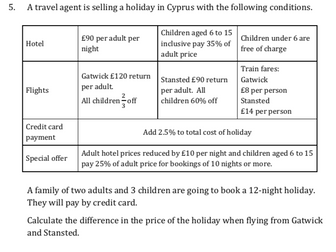
Differentiated long multiplication
This is a set of resources designed to help students master the skills of multiplication using the traditional column method.
The questions have been designed to help students to gain confidence and understanding by placing digits in circles rather than set out questions from scratch. Each question contains the correct number of circles, the size of each determined by whether it is a main digit or carried digit. I have found a key barrier to students feeling confident with this method is in the manner in which they prepare the layout in the first instance. These resources help guide students through this initial phase.
Each set of guided questions contain examples- allowing them to be completed in lessons or at home.
The following types of questions are included:
2 digits by 1 digit, 3 digits by 1 digit, 4 digits by 1 digit, 2 digits by 2 digits and 3 digits by 2 digits
In addition to guided questions, there are 3 sheets containing practice questions.



